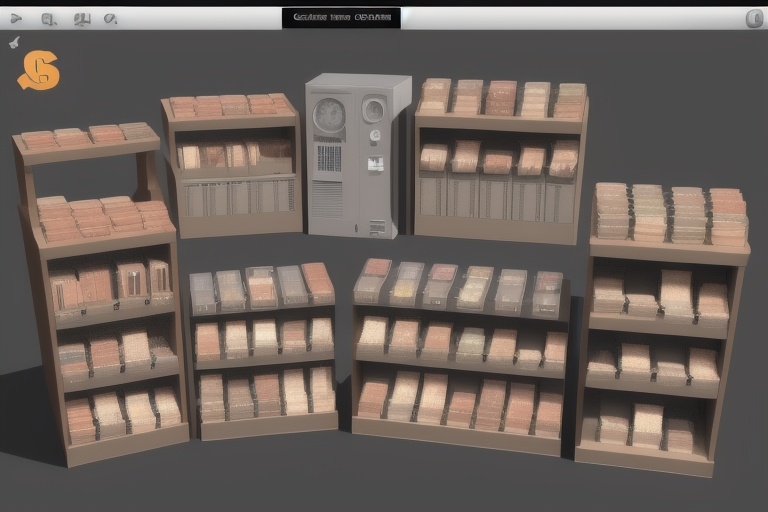Numismatic enthusiasts who are intrigued by the allure of ancient currency find collecting coins in India to be a truly captivating experience. One can glean insights into the rich tapestry of history, culture, and the intricate details of minting through exploring this field. This comprehensive guide will provide you with invaluable pointers on how to build your collection, interpret historical coins, and embark on a research quest to uncover the story behind each piece.
Numismatic enthusiasts who are intrigued by the allure of ancient currency find collecting coins in India to be a truly captivating experience. One can glean insights into the rich tapestry of history, culture, and the intricate details of minting through exploring this field. This comprehensive guide will provide you with invaluable pointers on how to build your collection, interpret historical coins, and embark on a research quest to uncover the story behind each piece.
Delving Into Indian Coinage: Expert Insights
Our exploration begins with the insights of two eminent figures in the world of Indian numismatics: Umair Shah and Mitresh Singh. Shah, a distinguished graduate from the National Institute of Fashion Technology (NIFT), shares his narratives on historical coinage through his celebrated Instagram platform, Sikkawala. Singh, both a chartered accountant and acclaimed author of "The Astute Collector," imparts practical wisdom and deep-seated knowledge widely recognized in the numismatic circles.
The Basics of Indian Coin Analysis
The adventure commences with a grasp of the basics. The majority of coins found in Indian households tend to be from the British Colonial period or from the myriad princely states, spanning back 3 to 4 generations (approximately 100 to 150 years). These relics, inscribed with Roman or Devanagari scripts, offer a simpler puzzle for enthusiasts to decipher.
Older coins, however, presenting Persian inscriptions, can pose a complex challenge. Umair recommends focusing on the Hijri date found on such coins. A conversion from the Hijri to the Gregorian calendar, facilitated by a familiarity with Persian numerals, can identify the precise epoch to which the coin is attributed, paving the way for further historical exploration.
Rarity and Valuation: A Critical Perspective
A prevalent intrigue among collectors is the rarity and value of their antique coins. Umair proposes a comparison with similar specimens featured in reputable auction house catalogs—Marudhar Arts, Oswal Auctions, and Classical Numismatic Gallery being exemplary. This comparison, scrutinizing the condition, symbols, mint details, and date of the coins, can approximate their worth—even minute similarities can significantly enhance a coin's market value.
Mint Identification: Deciphering the Codes
The mint-mark—indicative of the origin of coinage—is a vital piece of the puzzle. Mughal coins readily exhibit the mint name, but British-era and Republic India coins are identified by unique symbols: a diamond indicates the Mumbai mint, a dot signifies Noida, and the absence of a symbol typically points to coins minted in Kolkata. An easily accessible list of these demarcations can be found through a basic online search.
Trading Coins: Strategies for Buying and Selling
Prior to transactions, conducting thorough research is imperative. Numismatic exhibitions and interactions with renowned auction houses serve as excellent platforms for gaining insights and advice. Umair advises novice collectors to establish transactions with credible auction houses to circumvent the authenticity uncertainties often associated with online dealings.
Insights from 'The Astute Collector'
In "The Astute Collector," Mitresh Singh offers a decalogue for budding numismatists—start gradually, invest in educational resources and memberships, prioritize condition when purchasing, and cultivate a network within the collectible community. Recording your acquisitions, careful handling and storage, and refraining from unadvised cleaning practices form the bedrock of responsible collecting.
Preserving the Past: Cleaning and Storage Best Practices
It is a widespread consensus that cleaning coins, especially antiquated ones, should be approached with great caution as it can diminish the coin's luster and collectible value. On the rare occasion when cleaning is deemed necessary, experts emphasize using delicate methodologies, such as warm distilled water with a touch of baking soda for bronze or copper coins. Post-cleaning, air-drying, and potential application of a slender layer of mustard oil are recommended before storage.
Appropriate storage is equally critical and can be achieved through plastic, airtight capsules or archival-quality coin sheets; the separation of coins by metal type is crucial to prevent chemical interaction and potential damage.
Handling Coins: A Delicate Touch
Handling coins requires finesse. They should be lifted by the edges, avoiding direct contact with the face surfaces where the oils and dirt from bare fingers can cause irreversible harm. Employing a soft mat or cushion while inspecting or placing coins can reduce accidents and surface scuffing.
Budget-Friendly Collecting: Commemorative Coins
Collectors with limited resources may find it beneficial to start with commemorative coins—government-minted currency celebrating significant events and figures. These coins can be acquired with relative ease and often without large expenditure, laying a foundation upon which a more extensive collection can be built.
The Thrill of Discovery: New Finds
Even experienced collectors can stumble upon coins from ancient periods such as the Gupta or Mauryan empires that have yet to be documented, adding an exciting element of serendipity to the hobby.
Harnessing Knowledge: Reading and Researching
A predilection for reading and research is indispensable for any serious collector. It is through continual learning that one ascertains the historical importance and nuances of their collection, thereby transcending mere accumulation to amass a trove of significant cultural artifacts.
In essence, embarking on the numismatic journey of collecting Indian coins is a commitment to unearthing the past and fostering a deep appreciation for the artistry and heritage encapsulated in each coin. This odyssey demands patience, knowledge acquisition, and a conscientious approach toward the preservation and scrutiny of historical currencies. Remember to exercise due diligence in buying and selling, store and handle your coins with care, seek informed pieces to enrich your collection, and maintain enthusiasm for the never-ending pursuit of numismatic wisdom and discoveries. Happy collecting!
Information for this article was gathered from the following source.

